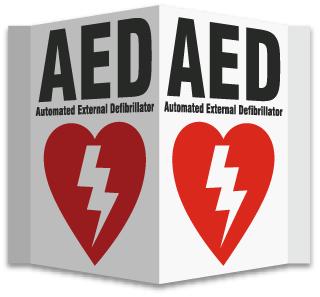Tom Petty's musical talent and immense fan appeal combined to produce what most observers would consider an incredibly lucky and charmed life. But ironically, it was the worst luck of all that befell the legendary rock star when suffering cardiac arrest that led to his death on Oct. 2.
Not simply that his heart stopped functioning, but that Petty was alone when he was stricken.
Being isolated in his Malibu, CA home on Oct. 1 – an event classified as an out-of-hospital cardiac arrest, or OHCA – turned out to be the fatal blow, because during the time it took paramedics to get to him Petty's brain was deprived of the essential oxygen it needed. And when no brain activity was detected into the following day, his family eventually decided to take Petty off life support and let him go.
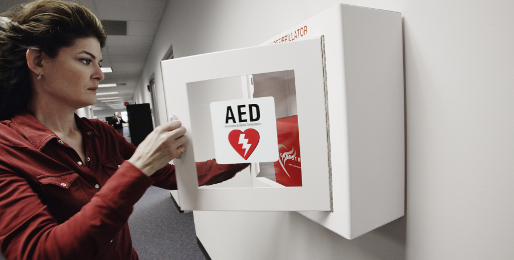 But what if the 66-year-old suffered cardiac arrest in public? At an airport or near a school, where a portable defibrillator was available? There's no guarantee that he would have lived, but because these devices – automated external defibrillators, or AEDs – are so easy for bystanders to use, certainly Petty's chances of survival would have been better.
But what if the 66-year-old suffered cardiac arrest in public? At an airport or near a school, where a portable defibrillator was available? There's no guarantee that he would have lived, but because these devices – automated external defibrillators, or AEDs – are so easy for bystanders to use, certainly Petty's chances of survival would have been better.
The only thing required would be someone ready to perform a few simple steps, steps so simple in fact, one study showed, that sixth graders had no difficulty mastering them.
More than 350,000 people in the U.S. suffer an OHCA each year, according to the American Heart Association, and because they're away from professional medical care an astounding 90 percent of them die. But if the public at large knows how to respond, lives can easily be saved. "CPR, especially if performed in the first few minutes of cardiac arrest, can double or triple a person’s chance of survival." And if you're interested in Good Samaritan laws, which vary by state, here they are.
Searching for a silver lining from Petty's death, perhaps it's that we can pay needed attention to AEDs, specifically what they are and how simple they are to use. Take a look around public areas – malls, government buildings, train stations, universities, even large office buildings – and these units in wall cabinets are plainly in view, and accessible.
And that accessibility is for good reason, because for every minute of delay waiting for medical help to arrive the victim's survivability decreases 7 to 10 percent.
Every minute, with life hanging in the balance, states the AHA.
"Death occurs within minutes if the victim does not receive treatment."
WHAT TO DO: SIMPLE STEPS
The first thing to know about a cardiac arrest is that it's "electrical." And AED's provide that electrical shock to jump-start the heart, so it can resume pumping oxygenated blood.
Secondly, there is no reason to believe that you cannot operate the machine. And better still, you are told what to do by the machine along the way.
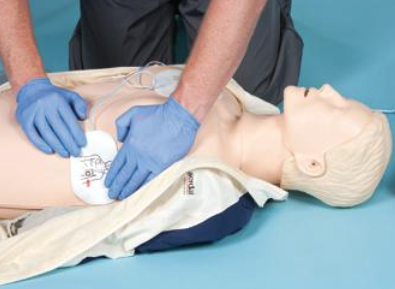 AEDs are "designed for use by the general public so that defibrillation can be delivered before EMS personnel arrive at the scene," according to the authors of a study published in the journal Circulation, examining AED usage. "When the AED is turned on, it provides voice prompts and visual cues to guide the user through all the appropriate steps."
AEDs are "designed for use by the general public so that defibrillation can be delivered before EMS personnel arrive at the scene," according to the authors of a study published in the journal Circulation, examining AED usage. "When the AED is turned on, it provides voice prompts and visual cues to guide the user through all the appropriate steps."
Those steps, following simple chest compressions as explained by the American Red Cross (which supplied the adjacent photos) are straightforward. Here they are listed below, and here's the link to the Red Cross's information.
- 1. TURN ON AED
- 2. WIPE BARE CHEST DRY
- 3. ATTACH PADS
- 4. PLUG IN CONNECTOR
- 5. STAND CLEAR
- 6. PUSH ANALYZE HEART RHYTHM BUTTON
- 7. DELIVER SHOCK
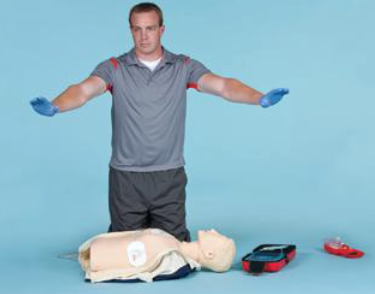 Want more evidence that using the AED is easy? Authors of the above-mentioned study describe how 13-year-olds performed using mannequins:
Want more evidence that using the AED is easy? Authors of the above-mentioned study describe how 13-year-olds performed using mannequins:
Researchers performed a "mock simulation of cardiac arrest to familiarize sixth-grade students who had no previous training with the use of an AED. They compared time to defibrillation, pad placement, and compliance with AED prompts to stand clear of the patient during shock delivery between the sixth graders and emergency medical technicians and paramedics," they wrote.
"The mean time to defibrillation was 90 seconds for the sixth graders and 67 seconds for the professionals. Both the sixth graders and professionals placed the pads correctly and stood clear of the patient during shock delivery."
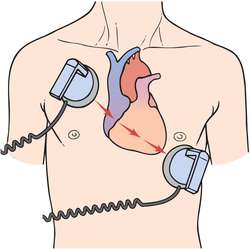 And if they can do it, so can you.
And if they can do it, so can you.
As you can see from the diagram, since the goal is to shock the stalled heart back into action it's easy to understand where the chest pads should be placed – on both sides of the heart, so that when the charge is administered it will go through the organ.
And of course, don't forget that someone near you should be calling 9-1-1 while you're administering aid with the AED. That's for two reasons: to get EMT's to respond to the emergency, and because the voice on the phone can also assist in walking you through the process.
Here's hoping some basic information about AEDs will help demystify this very important issue, while providing some encouragement to those willing to someday help a vulnerable and desperate stranger who literally has just minutes left to live.
